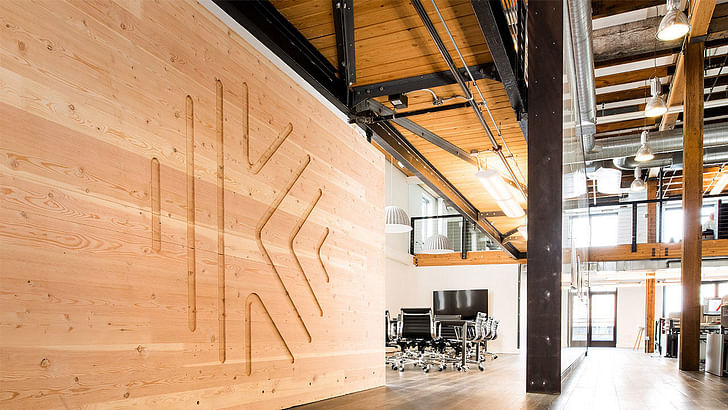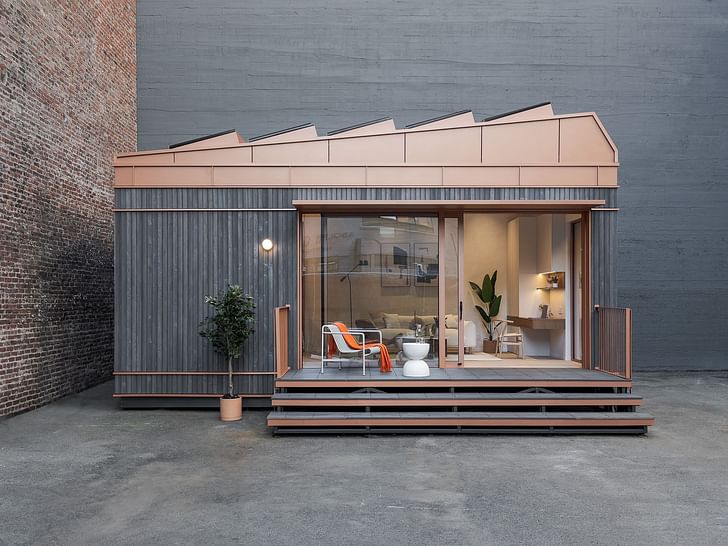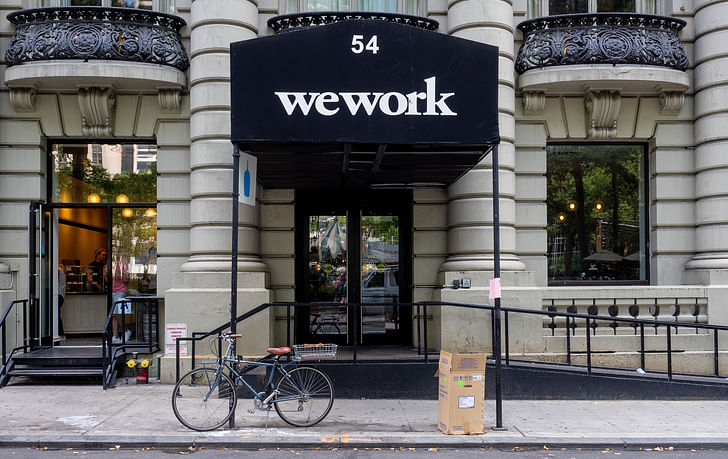

Despite the general consensus that the United States is in need of more affordable housing, funding to startups focused on affordable housing and more efficient construction technologies is lower in 2024 than in recent years. In the meantime, a series of high-profile bankruptcies, closures, and struggles have been reported among startups tackling the issue. How has this happened?
It’s a tough time to be a housing startup. Late last year, unicorn-status manufactured housing company Veev folded before being sold for a reported $100 million despite once being valued at $1 billion. Months previous, Business Insider profiled issues at Nevada tiny homes startup Boxabl, citing what it called “production problems, questionable governance, and its founders’ lavish spending.” In 2021, meanwhile, Archinect reported on the collapse of ambitious construction startup Katerra following years of challenges and bailouts.
“Broadly, funding to startups focused on affordable housing and more efficient construction technologies is down significantly from a couple of years ago,” Crunchbase wrote at the end of last year, before adding that “while rounds are getting done, no one would call affordable housing a hot theme for startup investment. We’re not really seeing new unicorns, nor are there any buzzy companies expected to be going public soon.”

The idea of affordable housing not being a ‘hot theme for startup investment’ appears absurd when one looks at the current demand for housing across the US. In 2021, Archinect reported that the US needed an additional 5.5 million housing units to compensate for decades worth of slowdowns in housebuilding. By 2023, reporting by CNN put the figure at 6.5 million while, in recent weeks, NPR wrote that the shortage was “somewhere between 4 and 7 million.”
It would be a stretch to say that the design and construction industry has been disrupted by startups to the level of other economic sectors.
One could forgive entrepreneurs, angel investors, and venture capitalists for not prioritizing housing as a subject of concern in an economy where startup activity was weak. However, the US is arguably experiencing a golden age of startups. The number of new business applications in the US (a proxy for startup activity) had already increased across the past decade from approximately 200,000 per month in 2010 to 300,000 per month in 2020, according to an analysis of Census Bureau data by The Economist. Following the COVID-19 pandemic and the advent of new technologies such as generative AI, this monthly average is 80% higher than pre-pandemic times, with 5.5 million new business applications made last year. “Everyone’s a founder” The Economist declared, presenting the figures.
This is not to say that the affordable housing problem is completely ignored by the startup ecosystem or that all housing startups are struggling. Over the past year, Archinect’s Job Highlights series has profiled open job positions at two startups seeking new solutions for affordable housing. The first, Assembly OSM, is a venture-backed startup born out of SHoP seeking to disrupt high-rise construction. The other, named Cover, is developing a system for home design and manufacturing inspired by the automotive industry, as its founders explained to us in a 2021 interview.

Elsewhere, our editorial has recently reported on progress by San Francisco-based Cosmic who have raised $1.5 million in funding for their micro-home product designs, the first of which is available for sale in California. Airbnb co-founder Joe Gebbia’s ADU company Samara, meanwhile, began production of units in its new Mexico factory as we reported in March. In addition to activity in the prefabricated and ADU market, the 3D printed architecture sector continues to make progress, whether through ICON’s suite of new technologies and products unveiled recently at SXSW or the many material innovations our editorial has reported on this year geared towards lowering the cost of housing production.
Despite such activity, it would be a stretch to say that the design and construction industry has been disrupted by startups to the level of other economic sectors. No company, or collection of companies, has done for housing construction what Airbnb did for short-term accommodation, what Uber did for transport, what Tesla did for electric cars, what Facebook did for social networking, or what OpenAI is currently doing for artificial intelligence.
Why is this? What is keeping the topic of affordable housing off the radar of investors? What has caused the recent spats of high-profile failures and struggles among the relatively few startups that have taken up the challenge?

"Katerra was started by guys from Silicon Valley who were going to show the stupid construction industry what a bunch of dinosaurs they were," Mark Erlich told Business Insider in January. Erlich, author of the book The Way We Build: Restoring Dignity to Construction Work, believes that the failure of housing startups such as Katerra can be attributed to their leadership and investors coming from outside the construction industry, with a cocktail of ambitious plans, little expertise, and “arrogance” leading to their demise.
One month later, Center for Housing Economics director Roger Valdez wrote in Forbes that, unlike the tech sector, housing is “highly volatile and sensitive to general opinion not just consumer need.” Valdez also attributes difficulties in housing innovation to land use and housing policies, noting that “the regulatory mess at the state and local level makes that impossible.” Erlich also took aim at regulations speaking with Business Insider, claiming that “restrictive policies” on housing and land use are built on a decades-long perception among officials that factory-built homes are inferior to traditional housing.
For a fixed long-term product such as housing, for which innovation and delivery can be measured in years rather than weeks or months, rapid fluctuations in the dollar value of such products do not lend itself well to a VC culture that demands fast, dynamic, adaptable solutions.
Then there is the complex question of demand. Erlich argues that one of the most significant obstacles to modular housing investment specifically was the perception that demand for modular buildings is not consistent. Investors, the piece argues, “aren't convinced there's sufficient and consistent demand for modular housing in most markets” beyond those with high volumes of repeated components such as hotels, dorm buildings, or multi-family apartment buildings with identical units. “If you have to adjust for design details, at that point, it just becomes prohibitively expensive, and you're much better off to build it on-site,” Erlich noted.

Beyond prefabricated or modular housing, the question of demand is just as complex for the wider housing market. While there is a general consensus that the US needs more homes over the long run, the residential market remains cyclical in the short-to-medium run, with the values of properties climbing and dropping in response to interest rates, economic performance, the desirability of a given locale, and countless other factors. For a fixed long-term product such as housing, for which innovation and delivery can be measured in years rather than weeks or months, rapid fluctuations in the dollar value of such products do not lend itself well to a VC culture that demands fast, dynamic, adaptable solutions.
It was this cyclical market condition that partly led to the demise of WeWork. While targeted at office spaces rather than housing, WeWork was nonetheless a victim of the cyclical fluctuation in the value of real estate. Having signed long-term leases on workplace buildings that they could sublease to individuals or companies, WeWork’s business model relied on the rental value of such spaces increasing or, at the very least, remaining stable. It didn’t. Launched in 2010, and once worth $47 billion, the writing was on the wall for WeWork by 2019 when a chaotic IPO exposed the scale of losses at the company. In November 2023, after the demand for office space plummeted during the COVID-19 pandemic, WeWork filed for bankruptcy.
WeWork was not a tech company, nor did it offer any tangible innovation in how physical space was designed, delivered, or used.
Of course, that wasn’t the full story. The failure of WeWork is also often placed on the eccentric nature and poor decisions of its founder Adam Neumann who was forced out of the company in 2019. Neumann, incidentally, announced the creation of a new startup Flow in 2022, targeting residential housing.
Perhaps Neumann’s first mistake, however, was to brand WeWork as a tech startup. Born out of a Silicon Valley boom where digital platforms were redefining the user experience of physical products from phones to cars to hotel rooms, WeWork, its founders, and its investors, saw real estate in the same light. Strip away the TED-style keynotes and slick apps, however, and WeWork was fundamentally a commercial leasing agent. WeWork was not a tech company, nor did it offer any tangible innovation in how physical space was designed, delivered, or used.

A lesson from WeWork’s demise may therefore be to recognize that innovation in housing is a different beast to the tech startups WeWork sought to emulate. While the tech industry can see world-changing innovations be born on a laptop in a dorm room, innovation in the AEC sector requires significantly more upfront costs, whether that be in material science, factory construction, or structural testing, before a solution ever becomes clear. While solutions in the tech industry can pivot on a dime in response to changing market conditions, innovations in housing are inherently less nimble. While startup founders in the tech industry can build a proof of concept under their own steam before approaching investors, innovators in housing have no such personal capital, while clients of architects and contractors are understandably resistant to their live projects being used as experiments.
"You don't have a General Motors, you don't have a Tesla, you don't have somebody who's willing to spend 10 years before they make a lot of money," Erlich told Business Insider. Instead, innovation in the design and delivery of affordable housing, one of the most urgent challenges facing the US and the world, finds itself navigating a complex regulatory landscape, an unpredictable and cyclical economic landscape, and a venture capitalist landscape primarily designed not to solve real problems, but to make a quick buck.
Niall Patrick Walsh is an architect and journalist, living in Belfast, Ireland. He writes feature articles for Archinect and leads the Archinect In-Depth series. He is also a licensed architect in the UK and Ireland, having previously worked at BDP, one of the largest design + ...
12 Comments
The singular focus on building technology is admirable, but getting anything built involves so much more than just construction - insurance, financing, loan covenants, local politics, building codes, energy standards. Not to mention the broader interest rate environment. Comparing buildings to consumer electronics almost seemed to me a weird analogy. Airplanes and other assets juggling engineering feats and political games seem a more apt comparison - except buildings have the disadvantage of rarely enjoying economies of scale.
not to mention the most expensive part of building anything is the site and its location; not the same to build in atlanta or san francisco. But hey, to each its own narrow vision.
The affordable land and affordable construction financing startups are what is really needed. Construction materials and methods are not the problem. It's really ridiculous overvaluation across the board in USA real estate. Contrary to hype, there's really no shortage of land or buildings.
I agree totally. But unfortunately, architects are simply not equipped with the knowledge, skills, and especially the financial expertise to contribute to this kind of money matters. That's the realm of developers. Occasionally, you have designer-developers who are able to marry creative design and financing (Alloy comes to mind). But they are few and far between.
As John Portman realized, architects are design the finest buildings but unless they get involved right at the start - with financing and politics - projects will almost always end up as fait accompli. Parameters are set well ahead of the architect's involvement. To build what he wanted, he had to be a developer.
If architects are able to court a much larger consumer base - that is, to work for home owners rather than developers, then I suspect the economics of the business will change quite a bit. Interior designers already have this market - they do work for individual home owners on a house-by-house basis. But architects rarely work directly with the end user outside single family housing.
housing cooperatives were quite popular in the 70-80's in Chile, lead by a couple of architecture firms, they offered an alternative to traditional developers. Don't know what's happening these days with that model. I think I heard there were some in the US, but it's not a common occurrence.
The stat in this page is sad - 1 million families in the whole US.
https://www.coloradosolidarity...
I wonder if it has something to do with family structure and social fabric - and of course, financial and insurance restrictions on such ways of organizing such efforts. Do Americans prefer to have their own homes (by and large)? Does communal living still have a hippie bent to it? Are the costs of marshalling financial resources, distributing risks, and managing a company and its liabilities too much work for most would-be homeowners?
Lots of people are out there offering pseudo "disruptive" building industry business models and technologies as bait to lure in venture capital money.
Why architects love to think having a lot of homeless is an architect's problem ? Its a political problem which politicians only want to clean it up when a totalitarian ruler came.
It just seems odd to think that the housing problem requires a new business model and new technology, and it feels like we're locked in a downward spiral of diminishing homes both in quality and size, with diminishing quality of life following. The problem was solved centuries ago in part by the private sector with company housing—with varying results, of course.
One problem is public commitment to affordable housing as translated into political will has never been strong and has had to fight powerful private interests—the real estate industry—and popular misconceptions politically propagated—"it's socialism."
And for so many reasons, housing should be solved locally. Airbnb in a sense is a localized solution. It depends on local resources—people's homes—which it coordinates. Here the solution requires some distant, centralized corporation.
The homes in the mining town, above, look downright spacious. Industry has changed, of course, as many concerns have shut down and/or moved elsewhere. But the need for housing and community remains a local matter.
Did this article get noticed here?
https://www.nytimes.com/2024/06/08/headway/how-an-american-dream-of-housing-became-a-reality-in-sweden.html
"How an American Dream of Housing Became a Reality in Sweden"
It talks about Operation Breakthrough here, which had a short life.
Housing shortages were already a problem in 1969. Romney understood that companies wouldn’t invest in the machinery and overhead needed to industrialize because varied local building and zoning codes made it impossible to scale up. Operation Breakthrough proposed using the vast purchasing power of the federal government to guarantee a large market, and in the process, document and change the regulatory barriers to industrialization.
But as Rupnik pored over the record, he was struck by what the program had accomplished. It had led to a national code that regulated and greatly expanded the previously lawless trailer home sector, which now accounts for 10 percent of single-family homes. To Rupnik, the experiment demonstrated something powerful: When a uniform national building code was implemented, industry would respond. The barriers to building housing fast, in other words, weren’t technological, but institutional.
Sweden has taken the lead, and the article discusses how in detail.
I think it was mentioned in another thread.
The bit about national codes is instructive. There is no federally mandated national code in the US. Part of it is by design, courtesy of the federal nature of American government. Each state and municipality has their own take on building and energy codes, with some leading the way for others. Part of it is out of necessity, due to the different climate zones around the country. Sweden in contrast has much more limited climate and market variation.
The country is fragmented, as is the AEC industry. It's just so damn hard reaping any economies of scale at the scope of housing (Individual trades can be commoditized, and have been for decades). And that's before the pricing power and financial/insurance considerations come into play.
It's a good article, which spends time explaining the prefab process in Sweden. Maybe off here, but I suspect quality control is higher there. I would live in a home built like a Volvo.
Block this user
Are you sure you want to block this user and hide all related comments throughout the site?
Archinect
This is your first comment on Archinect. Your comment will be visible once approved.